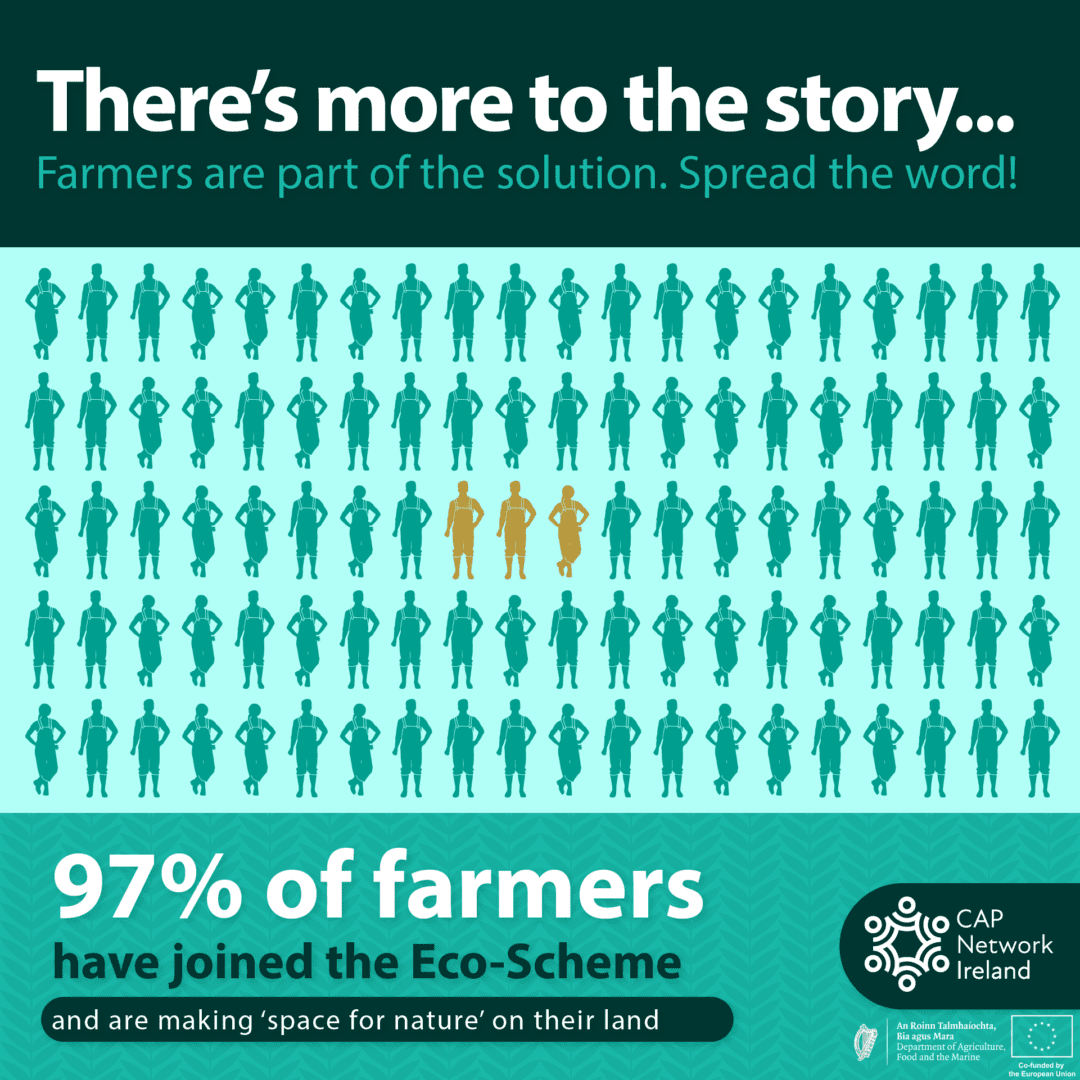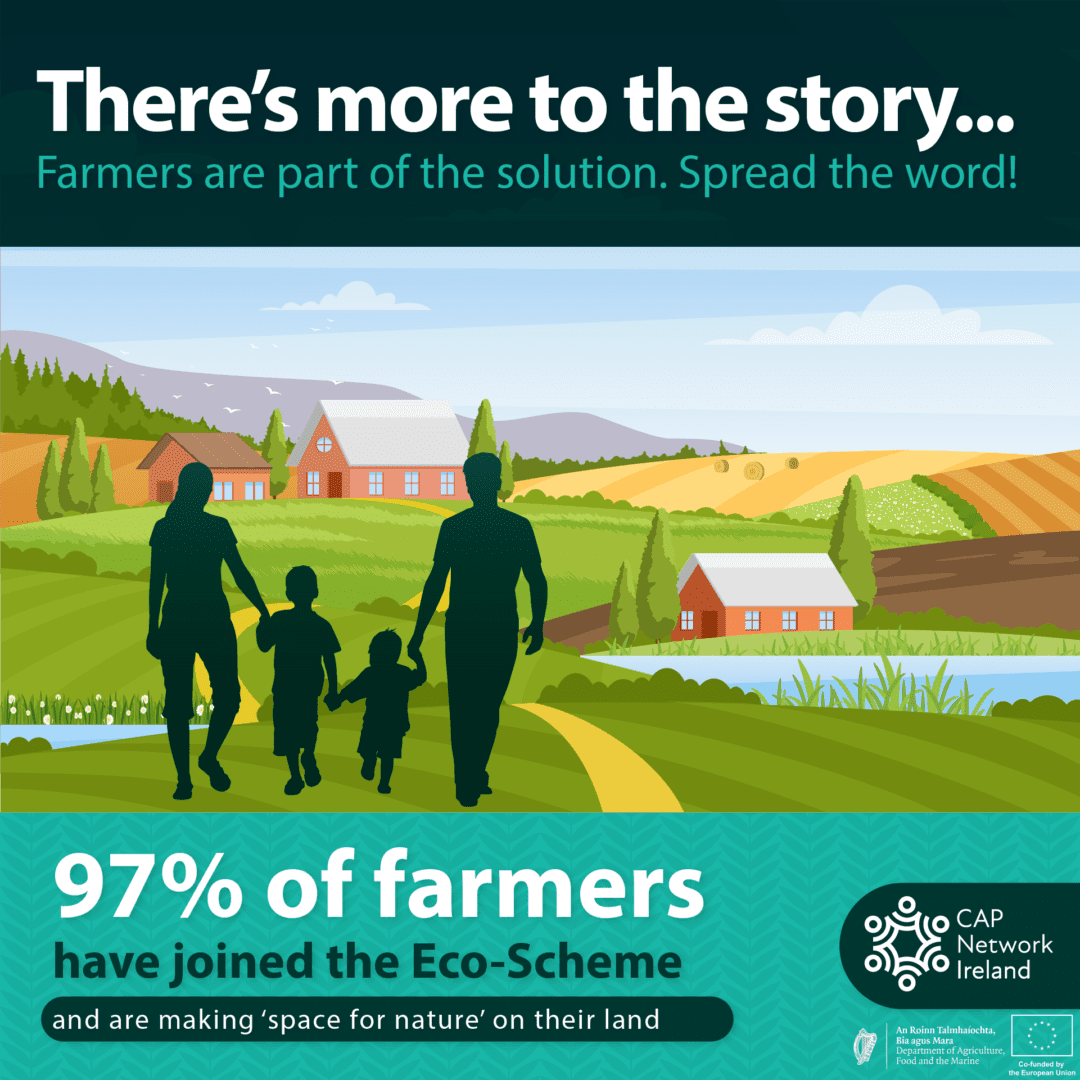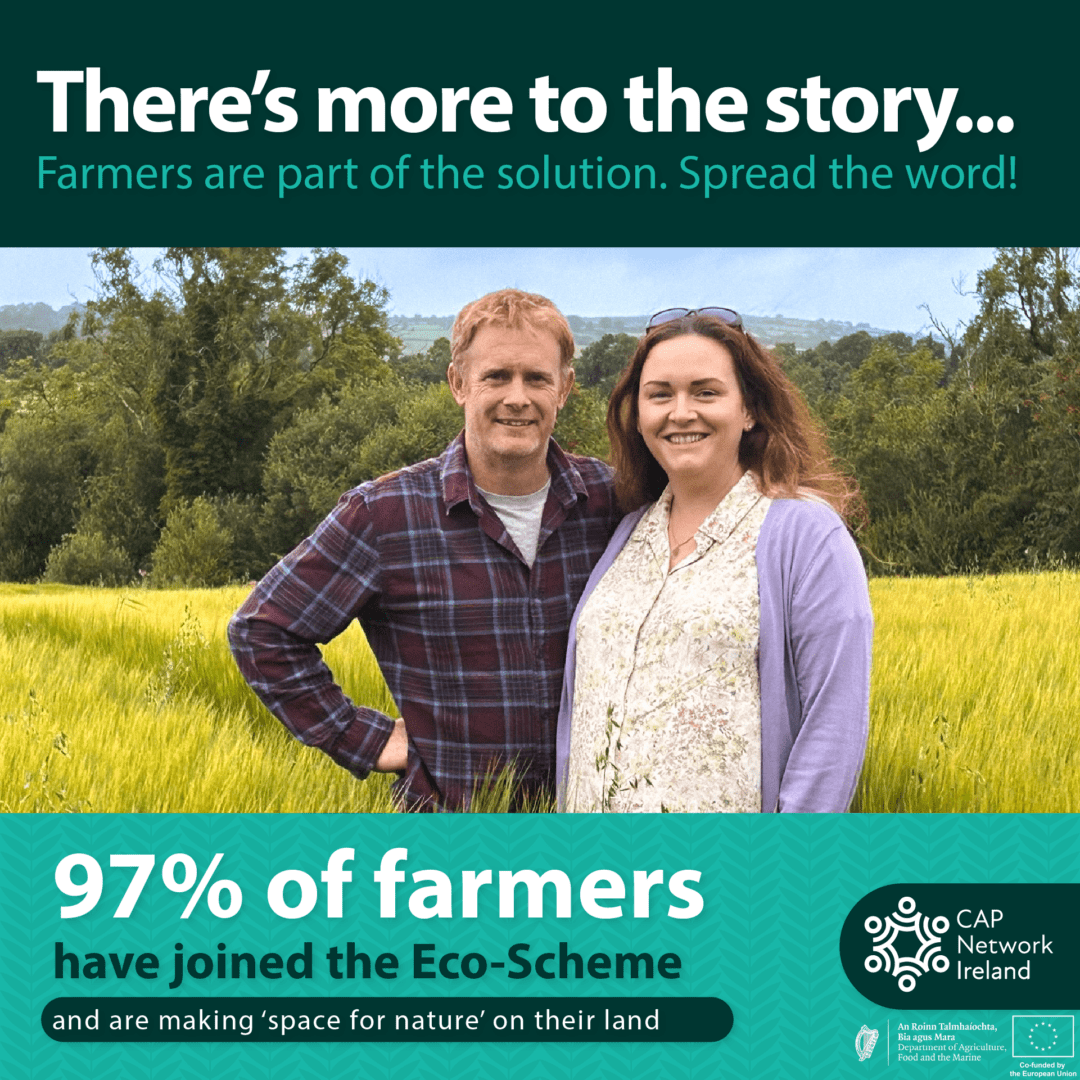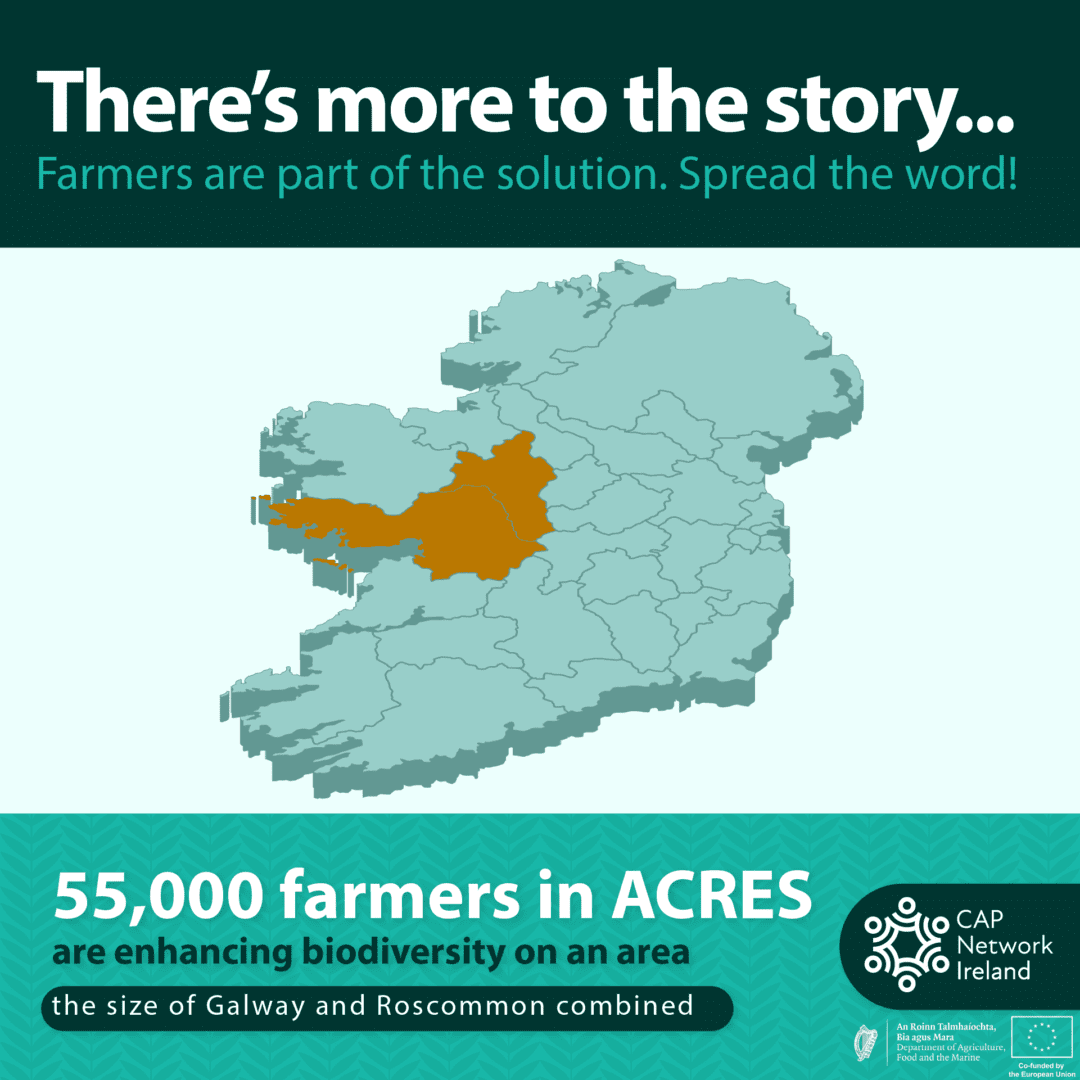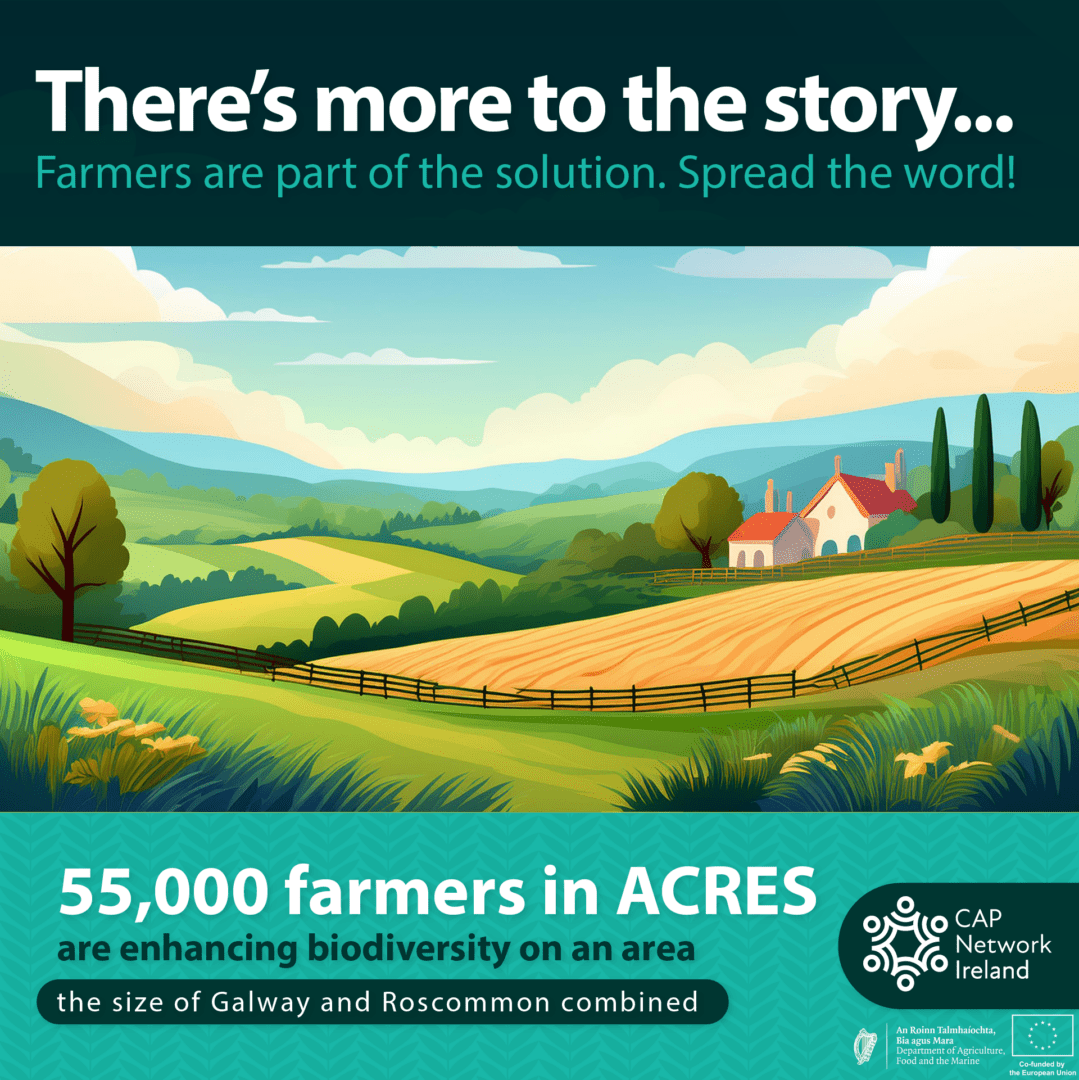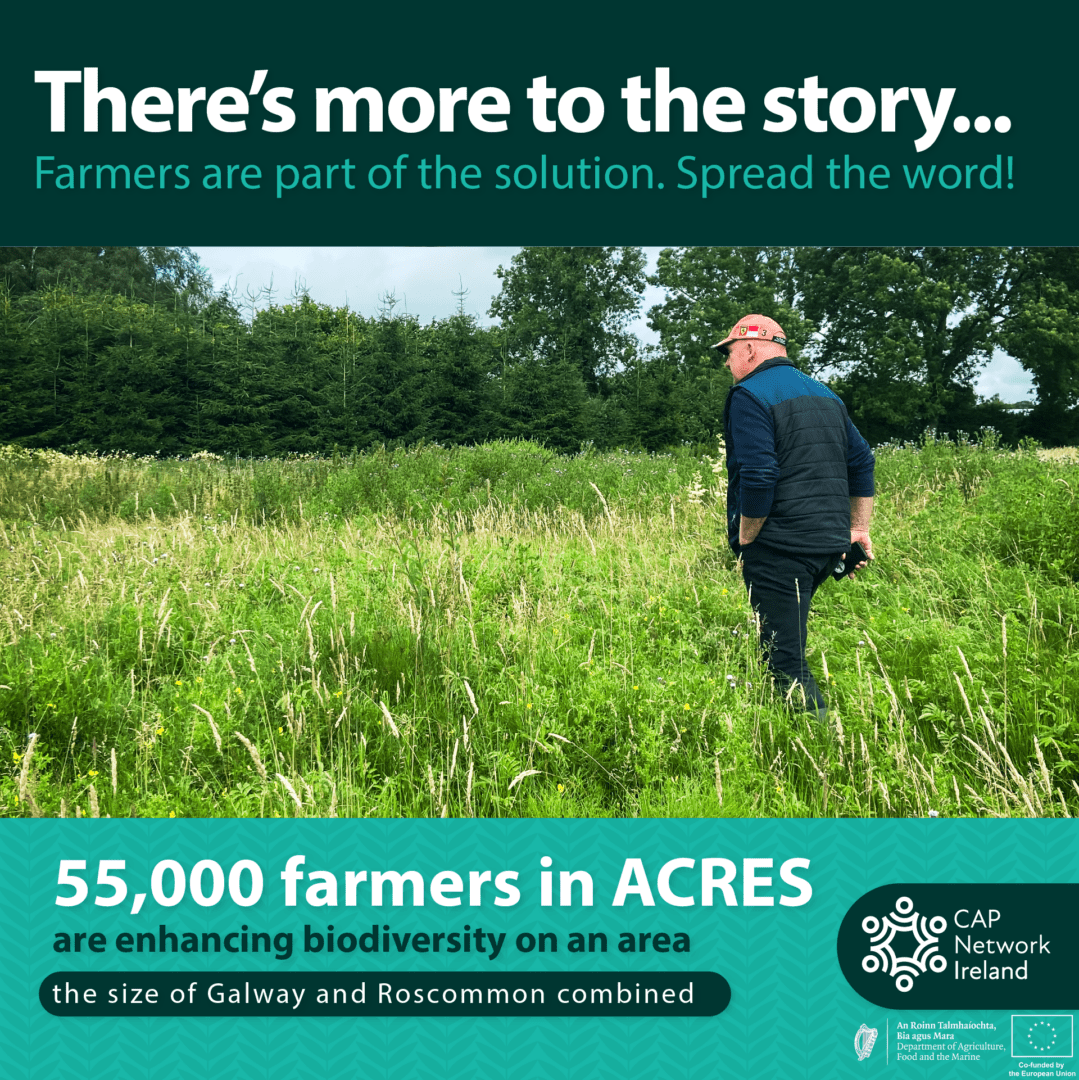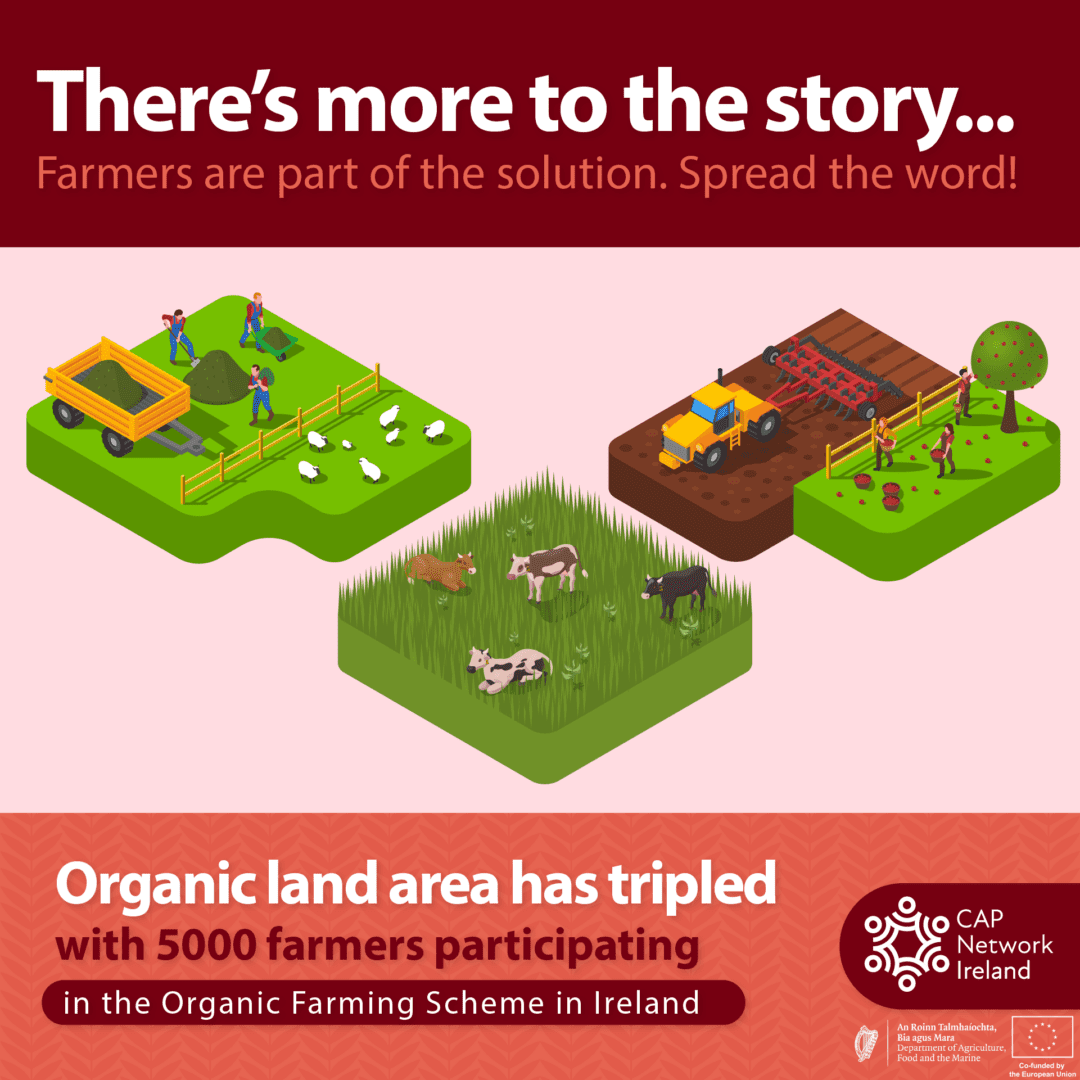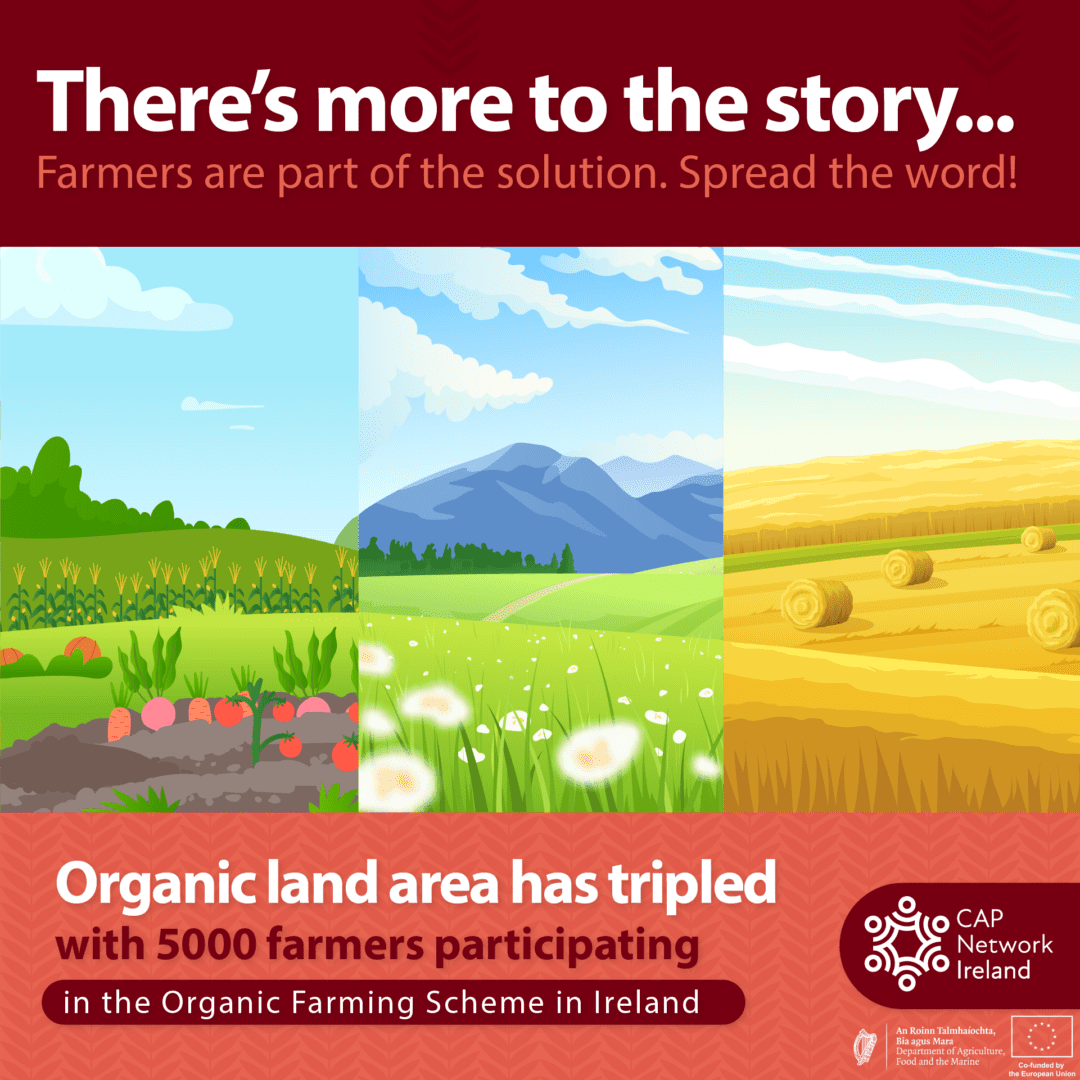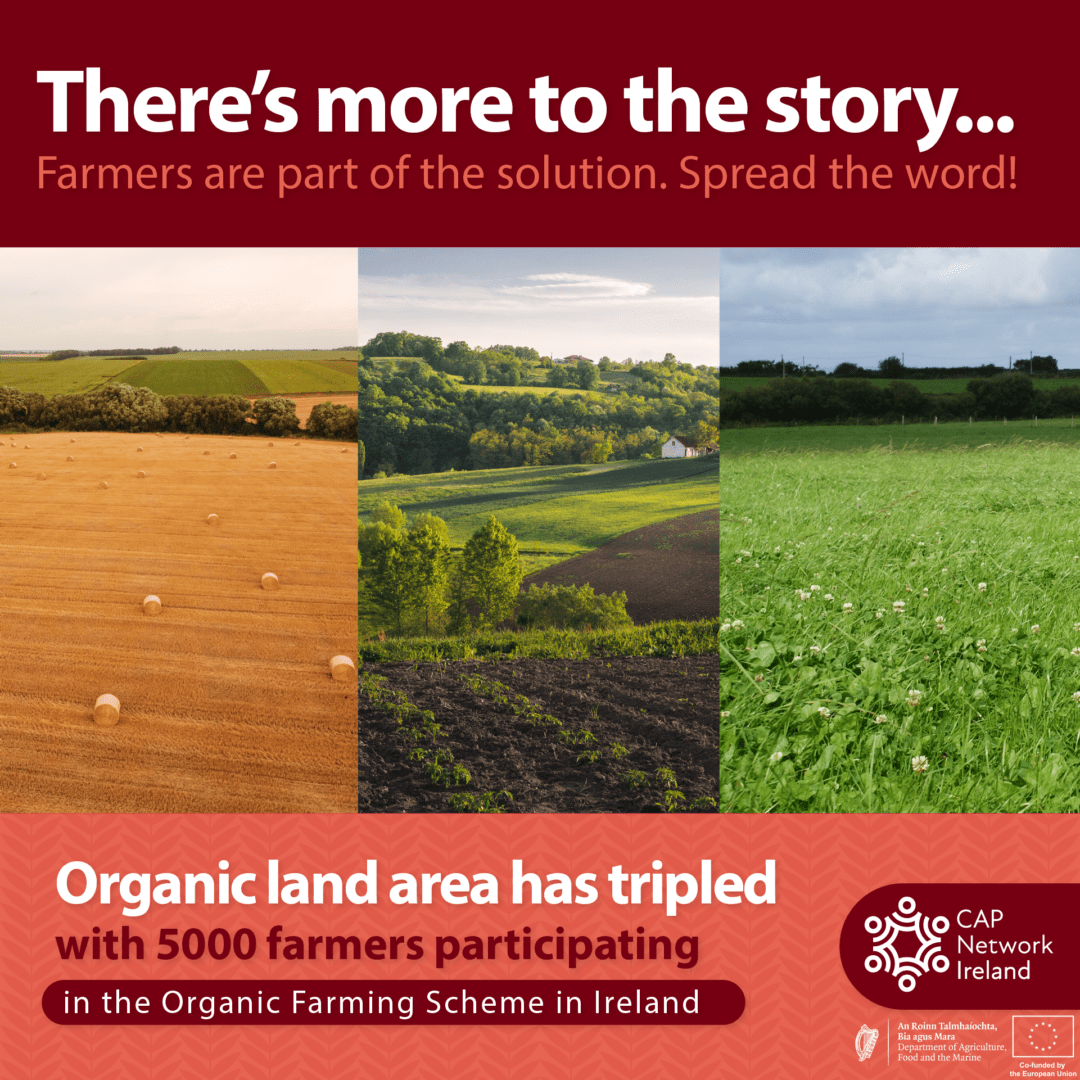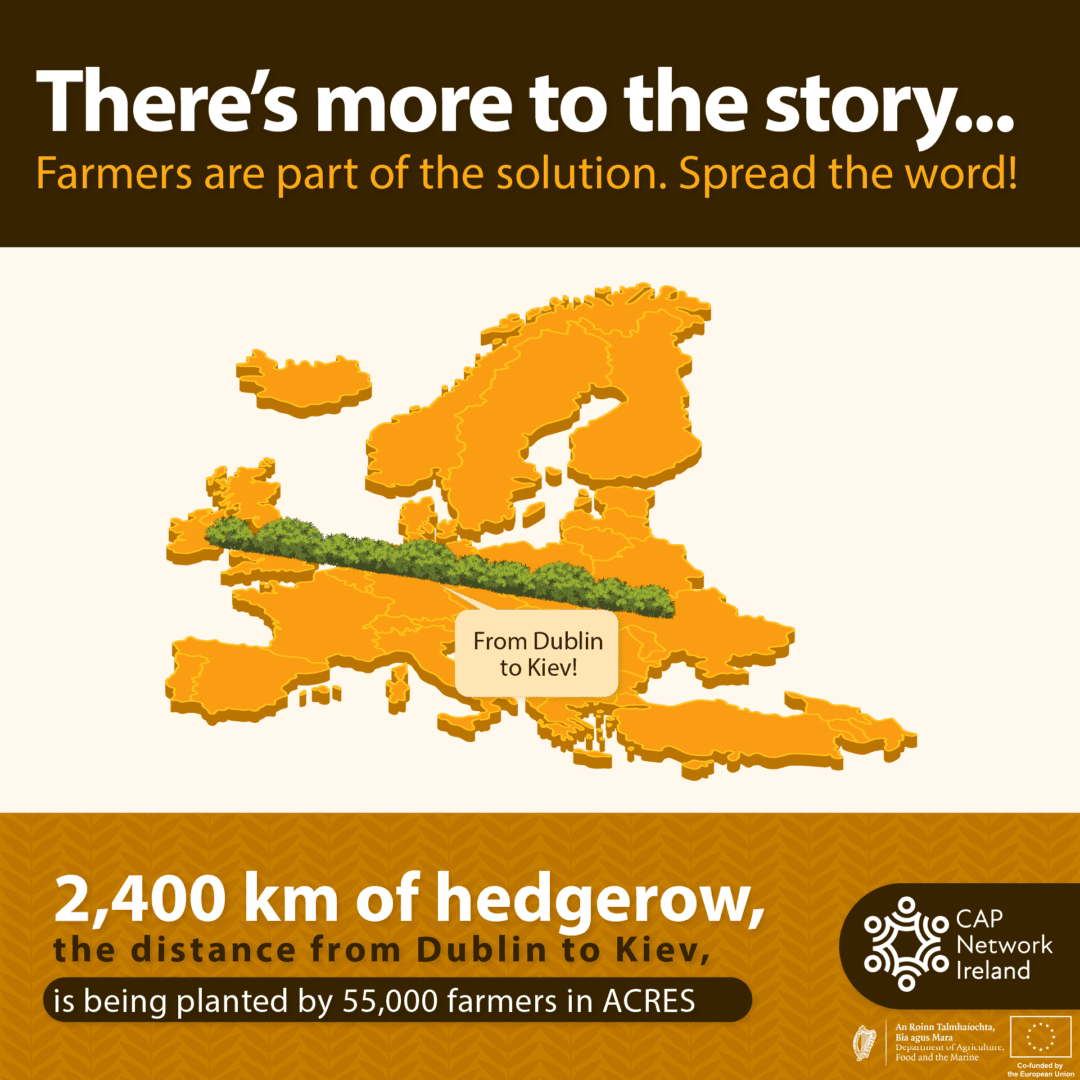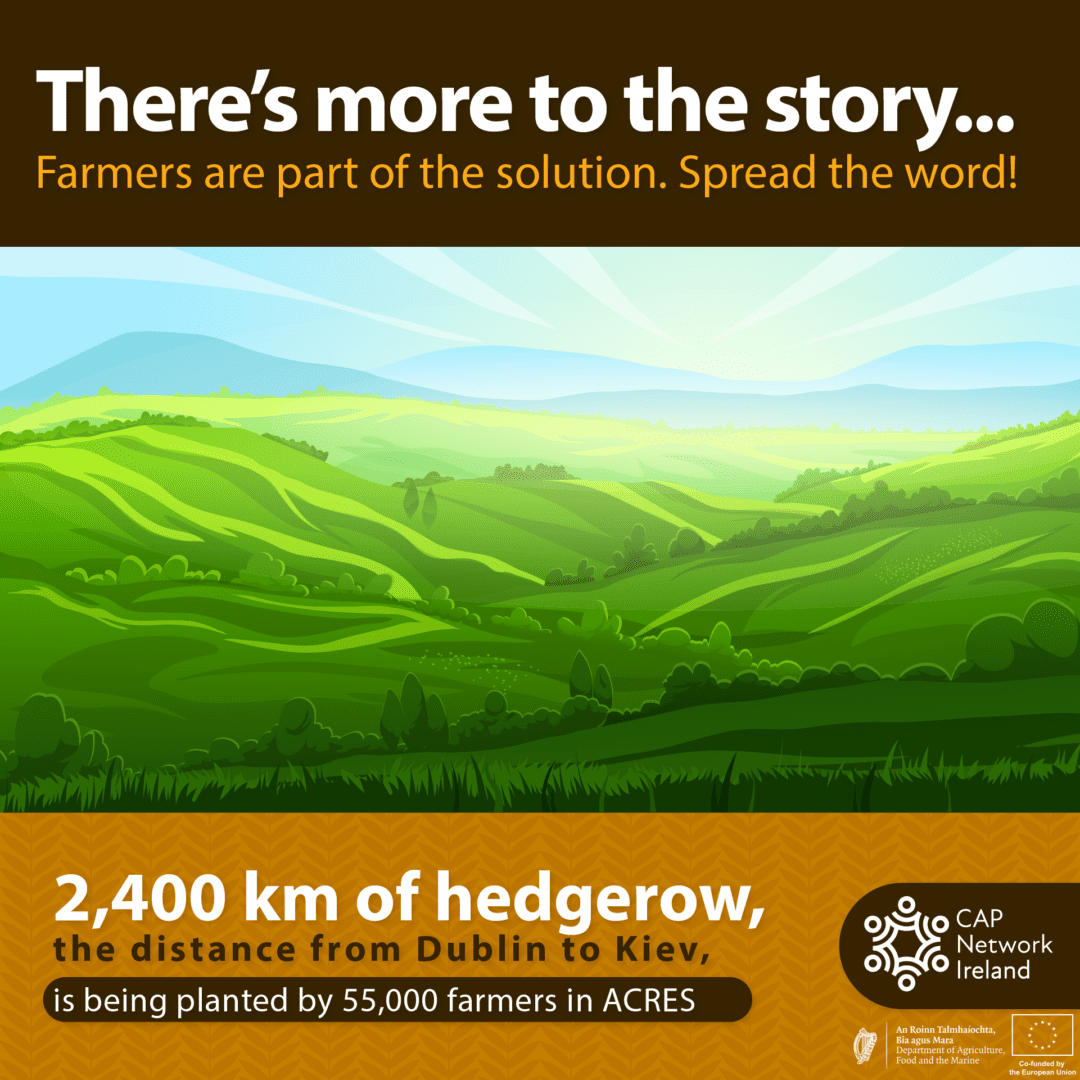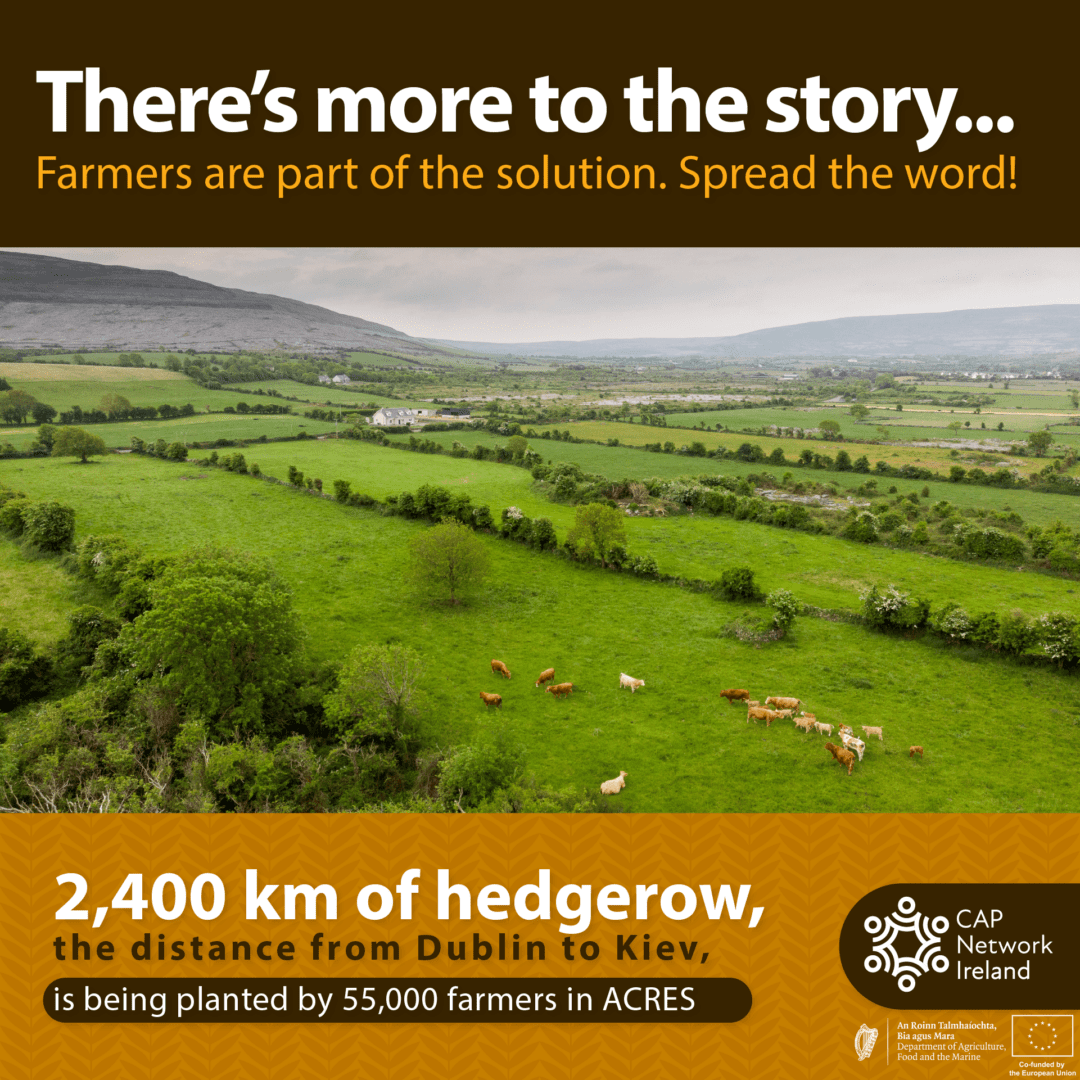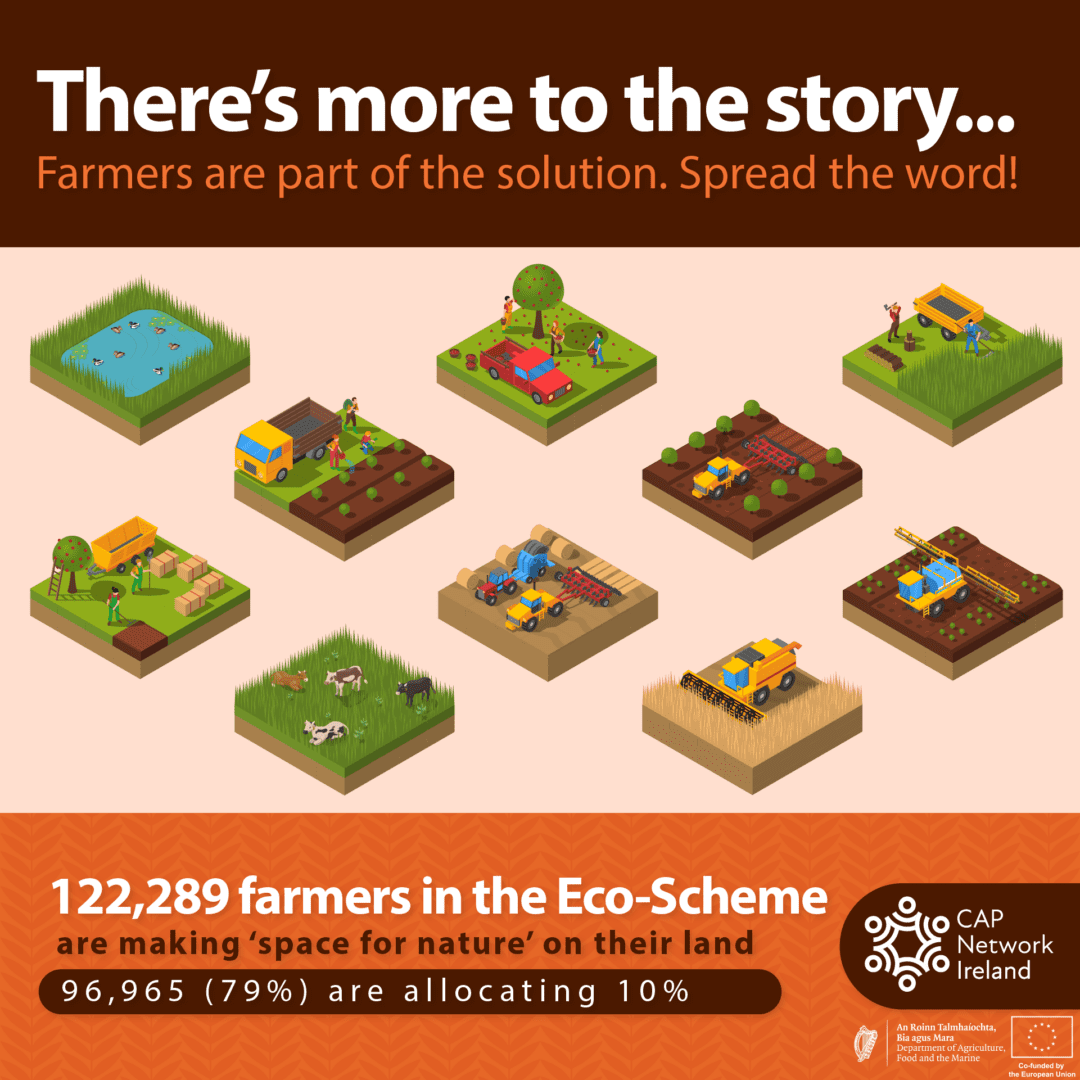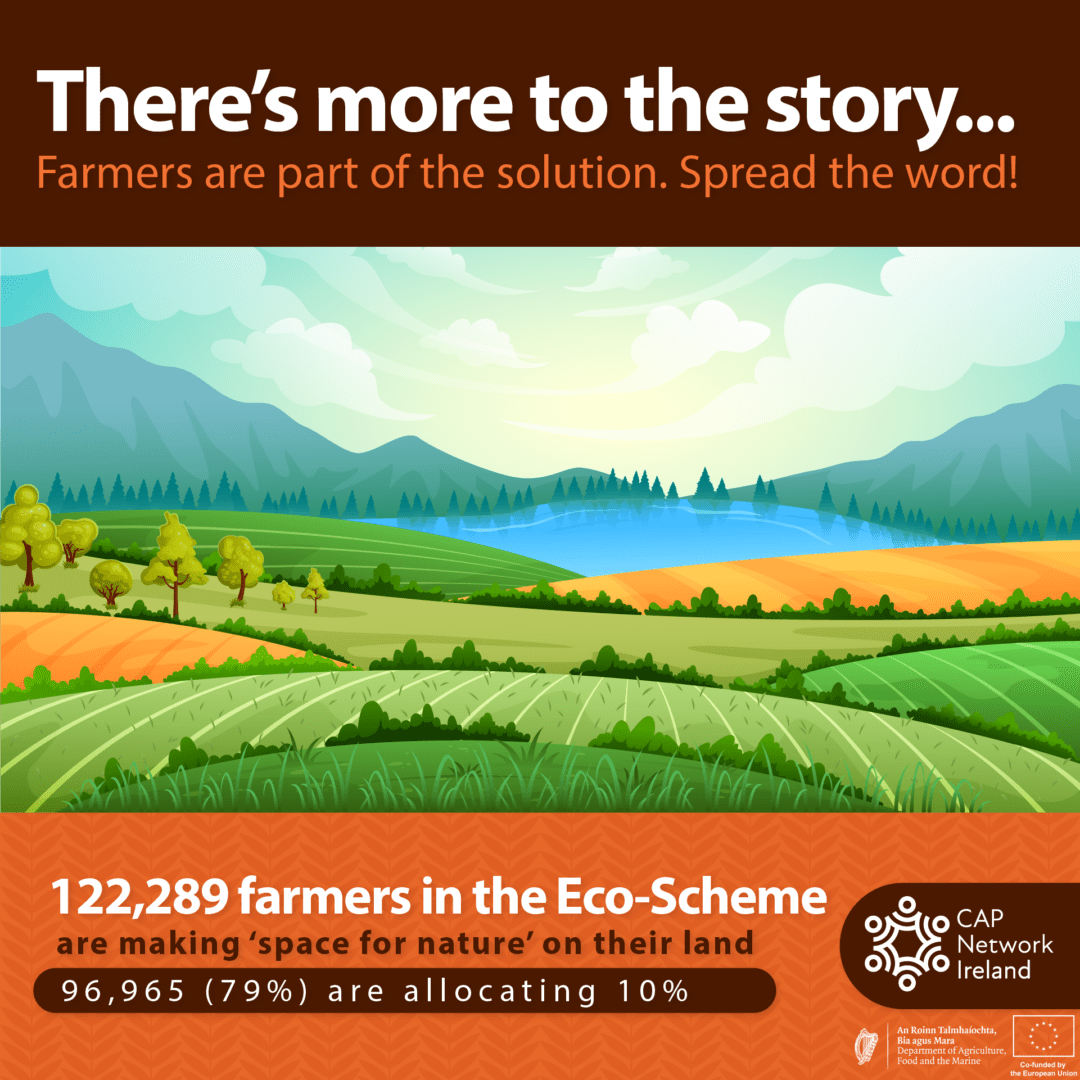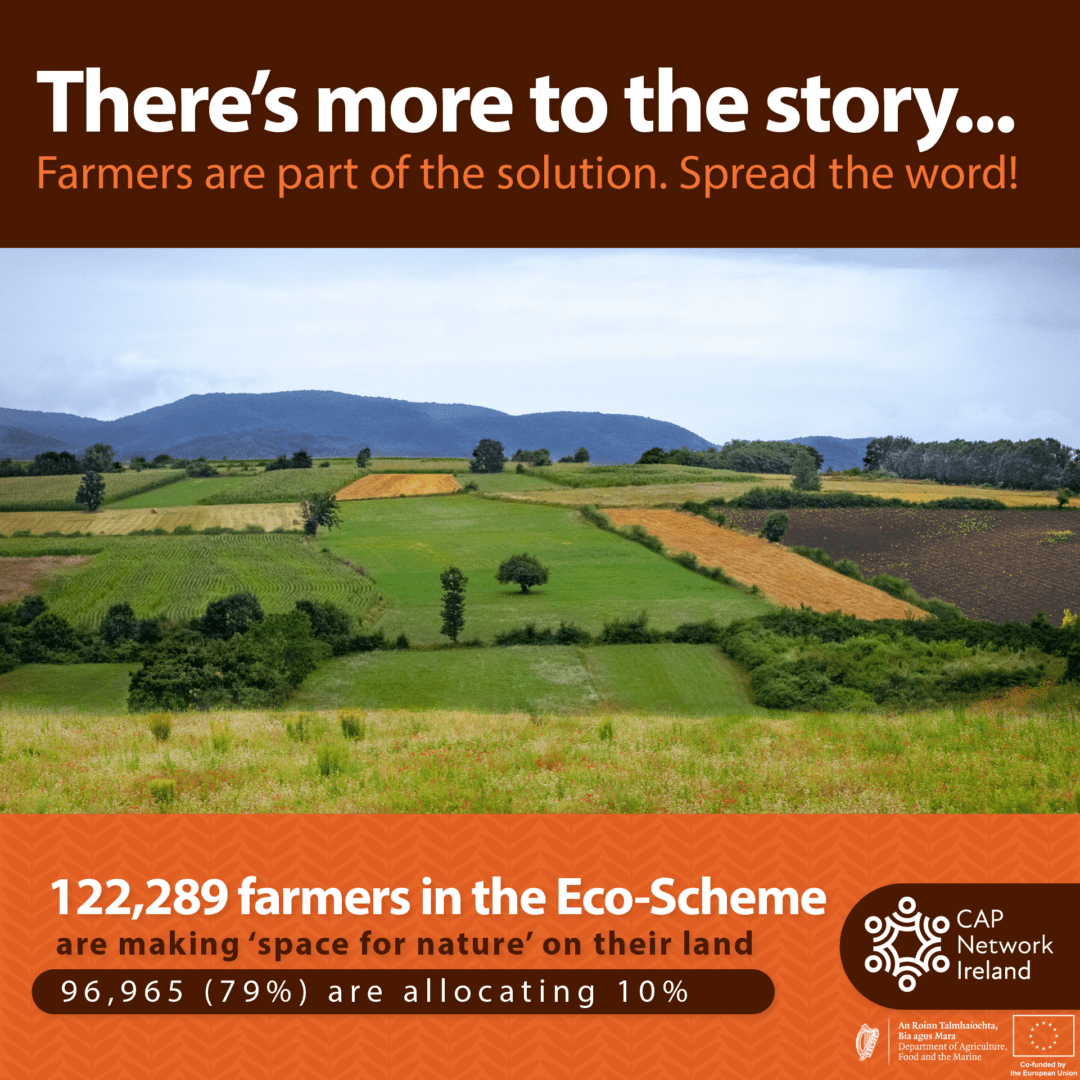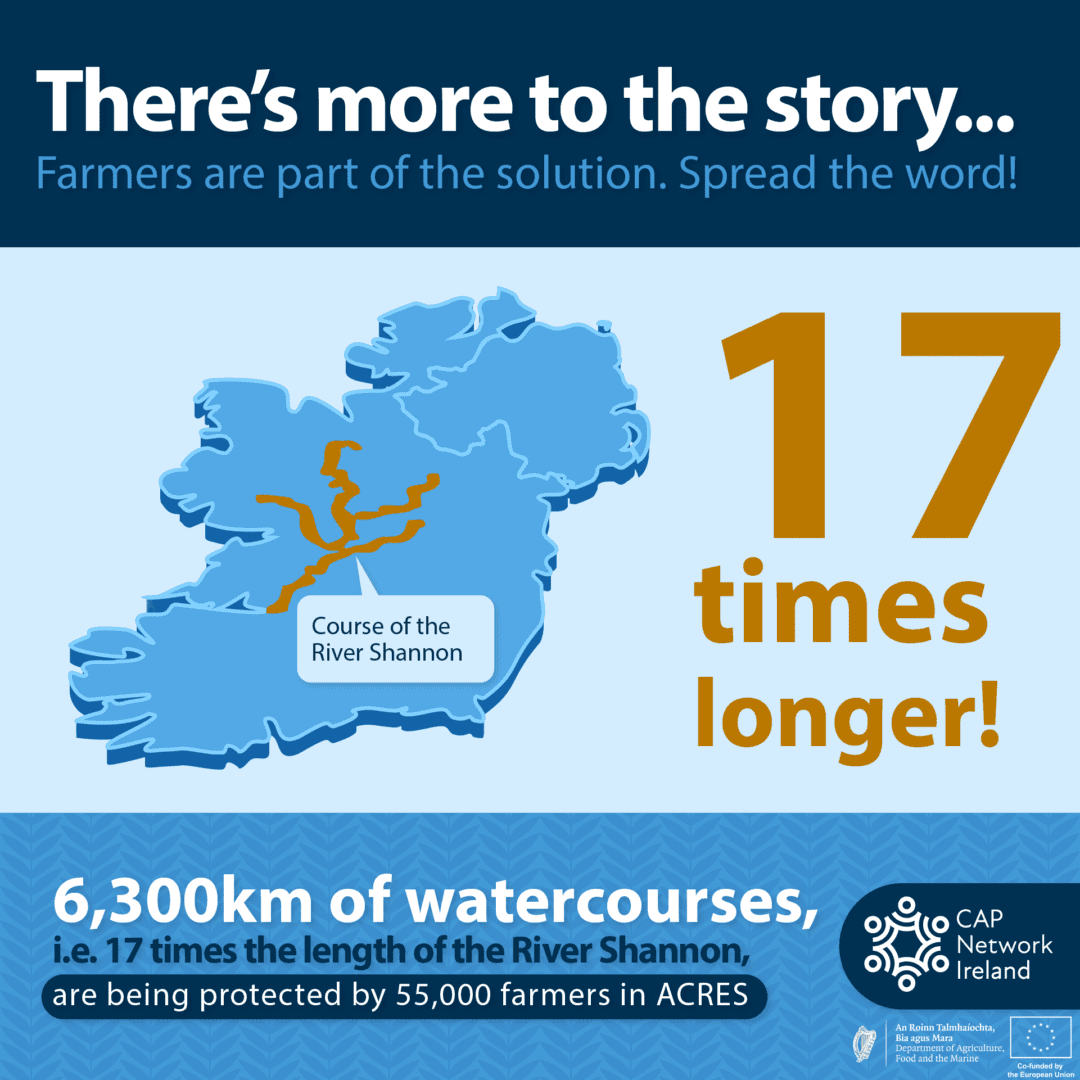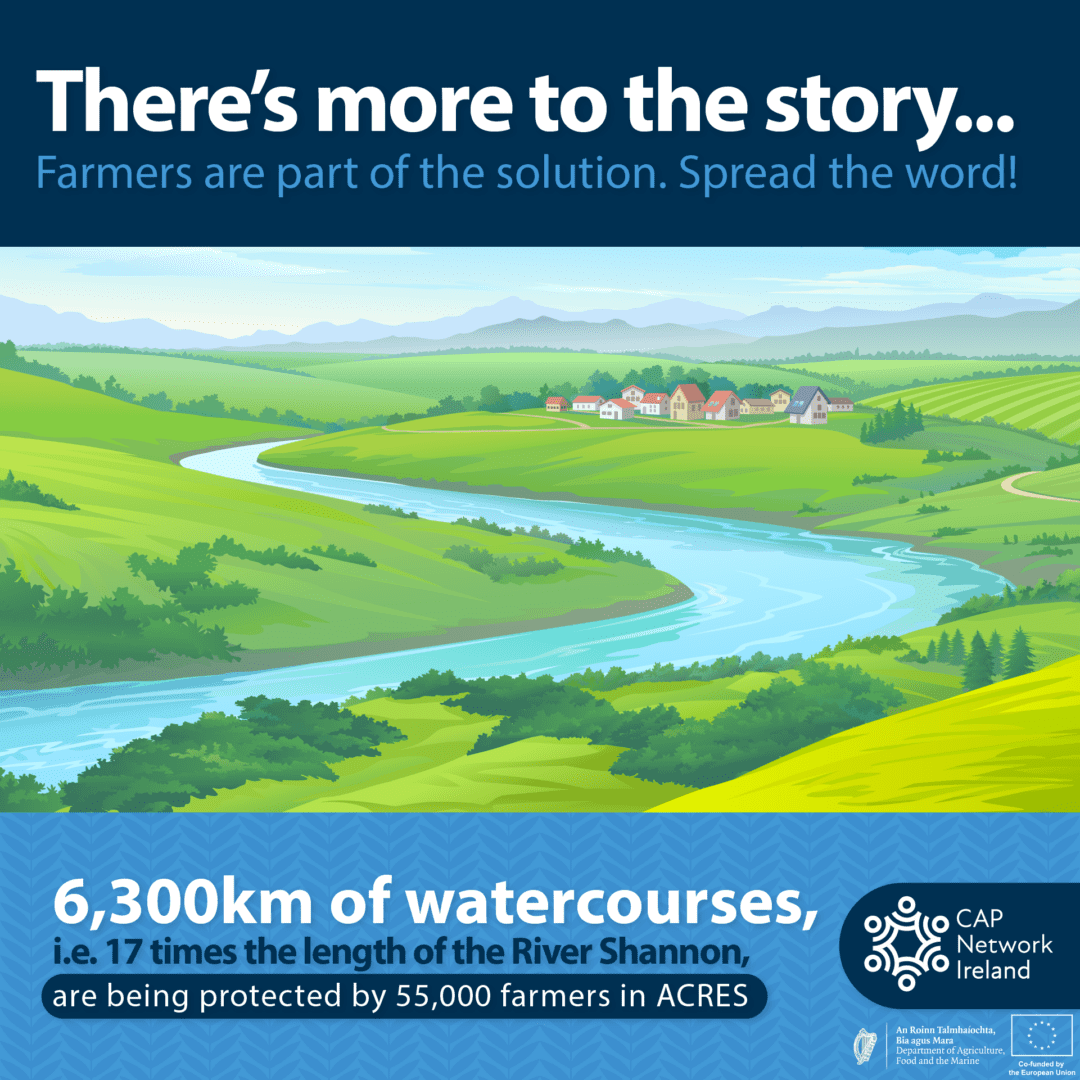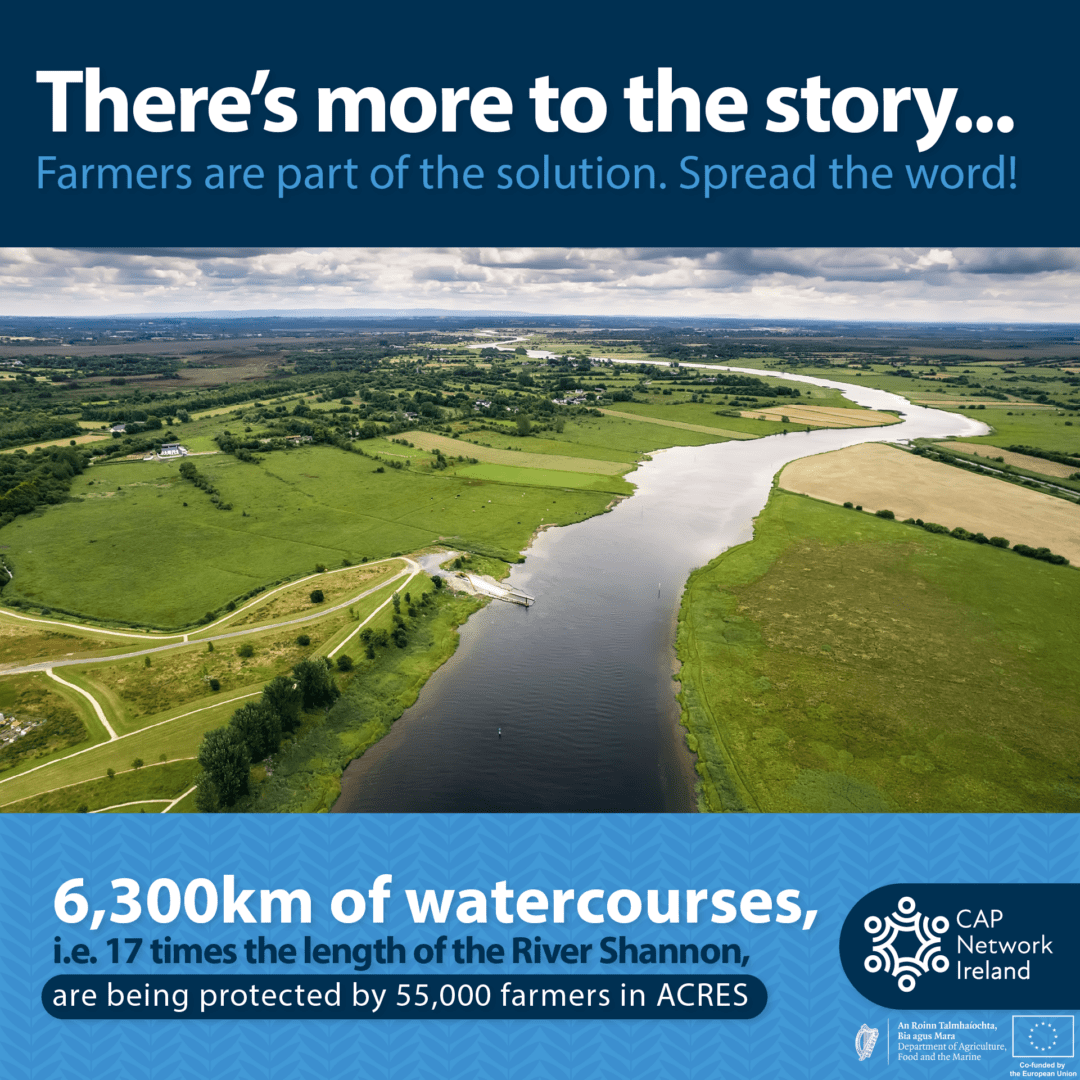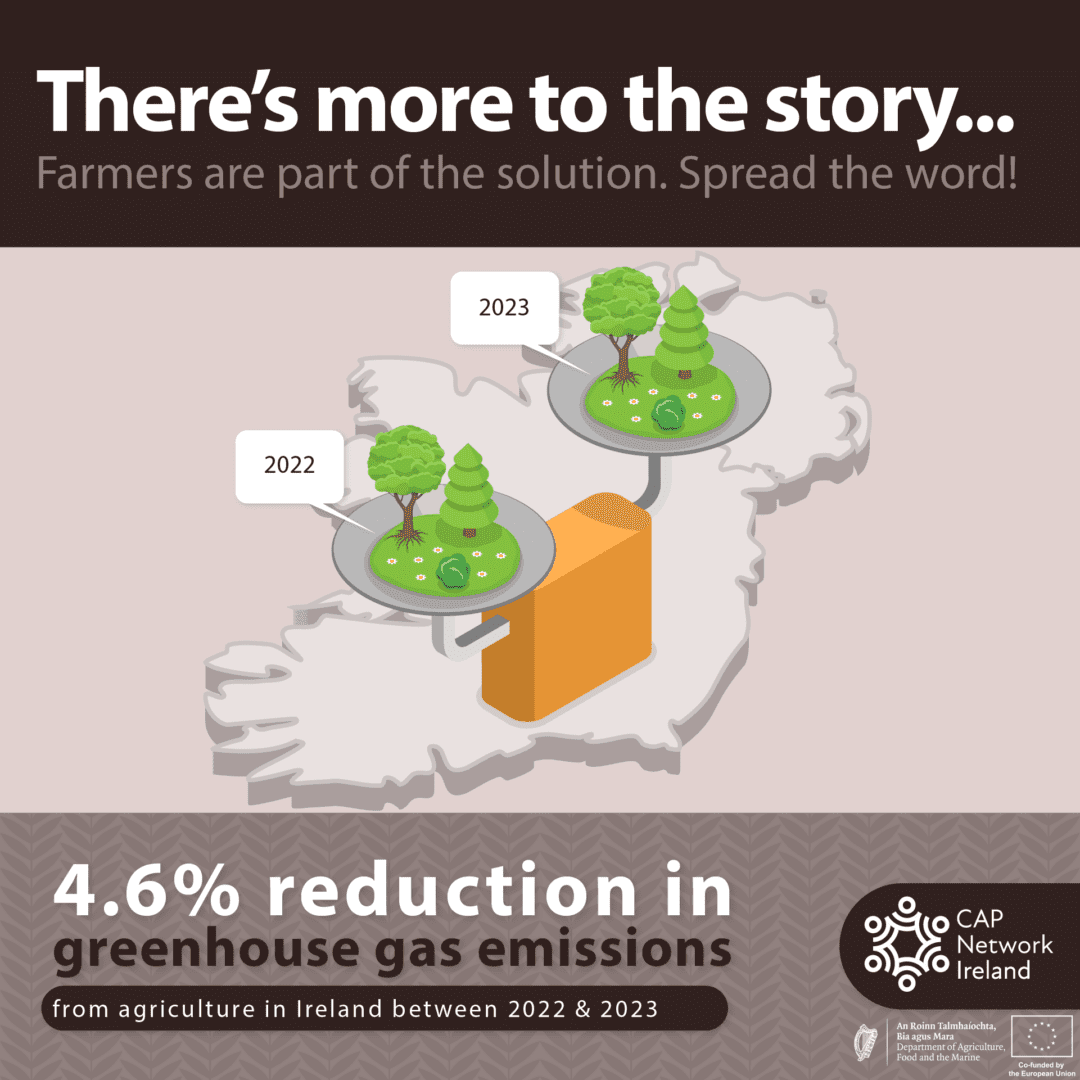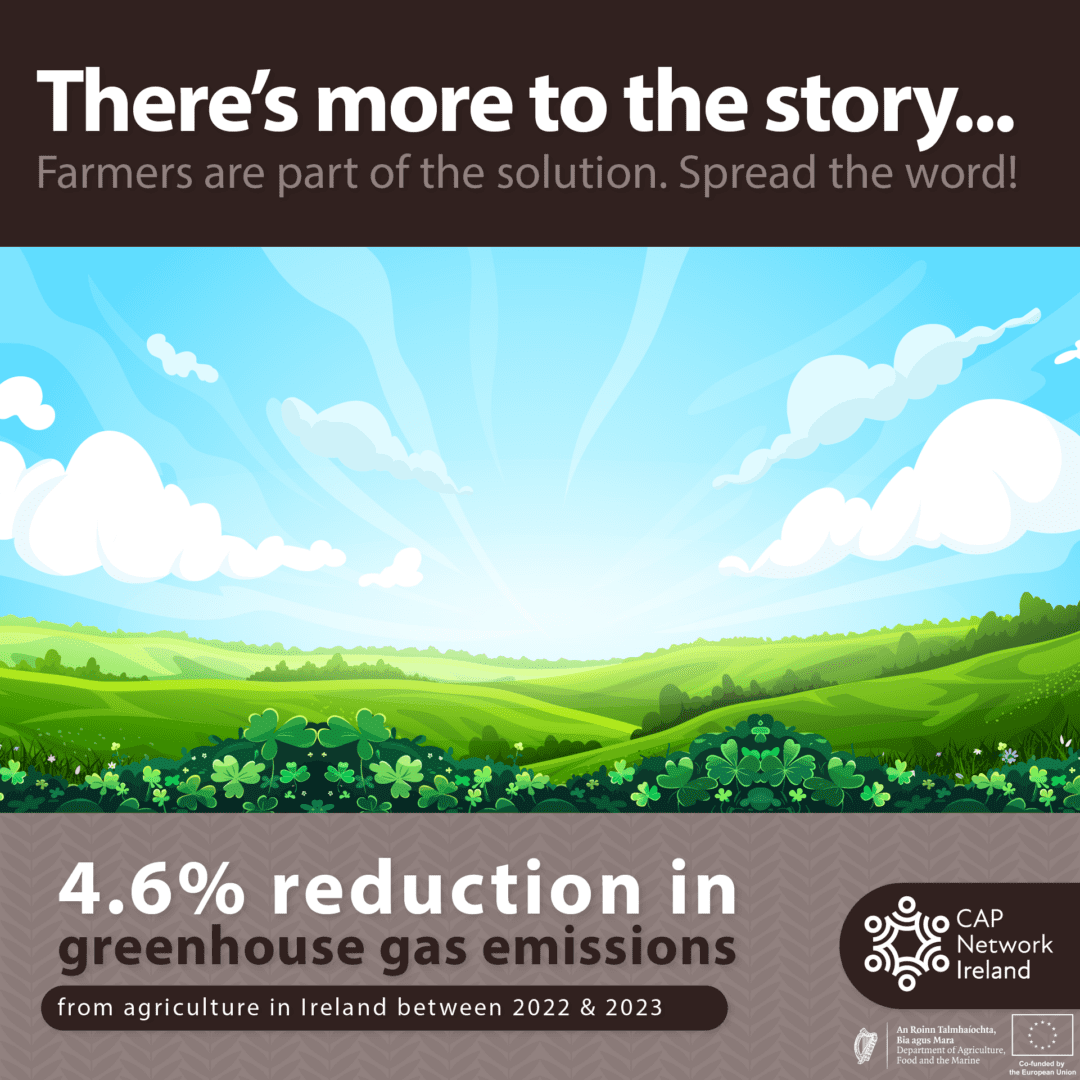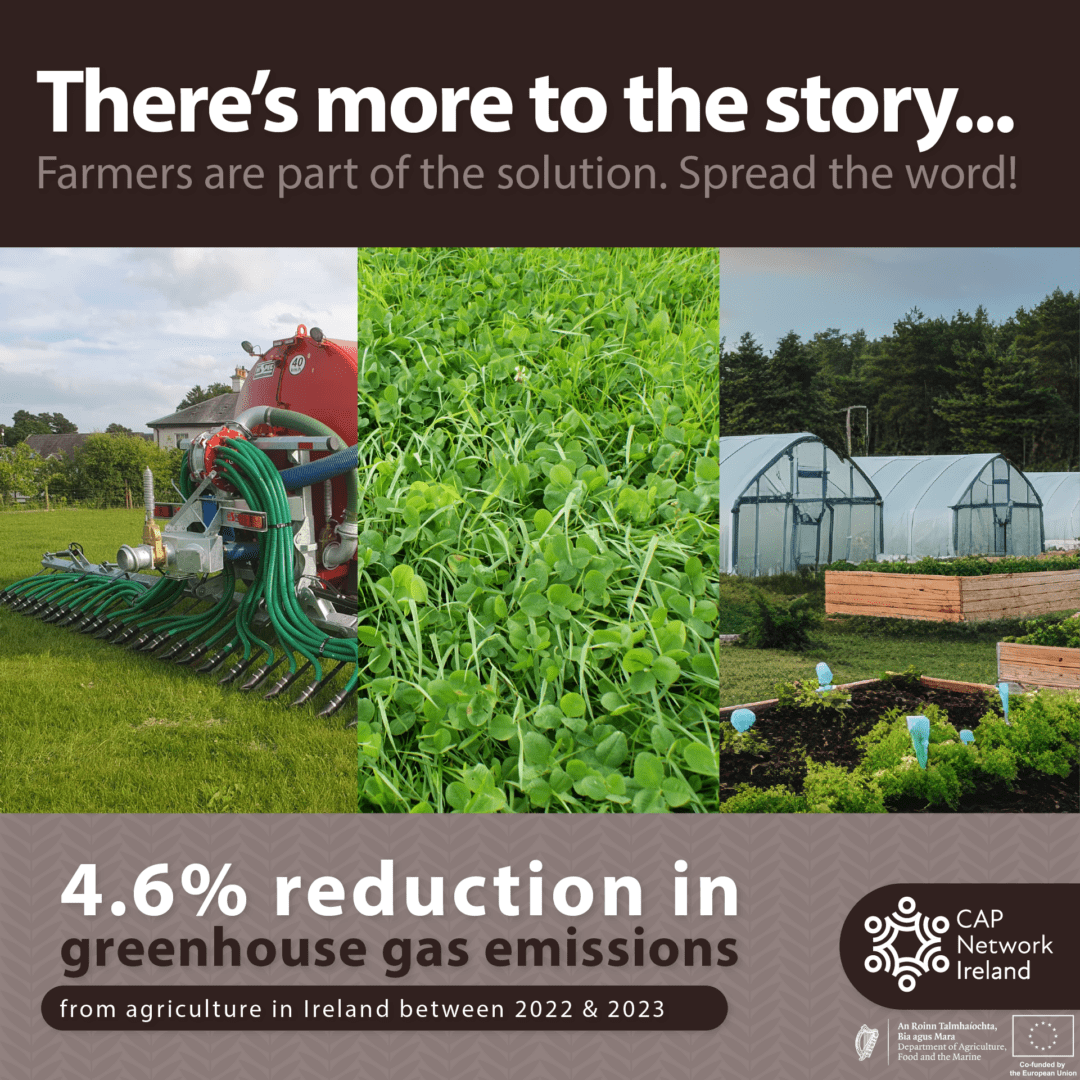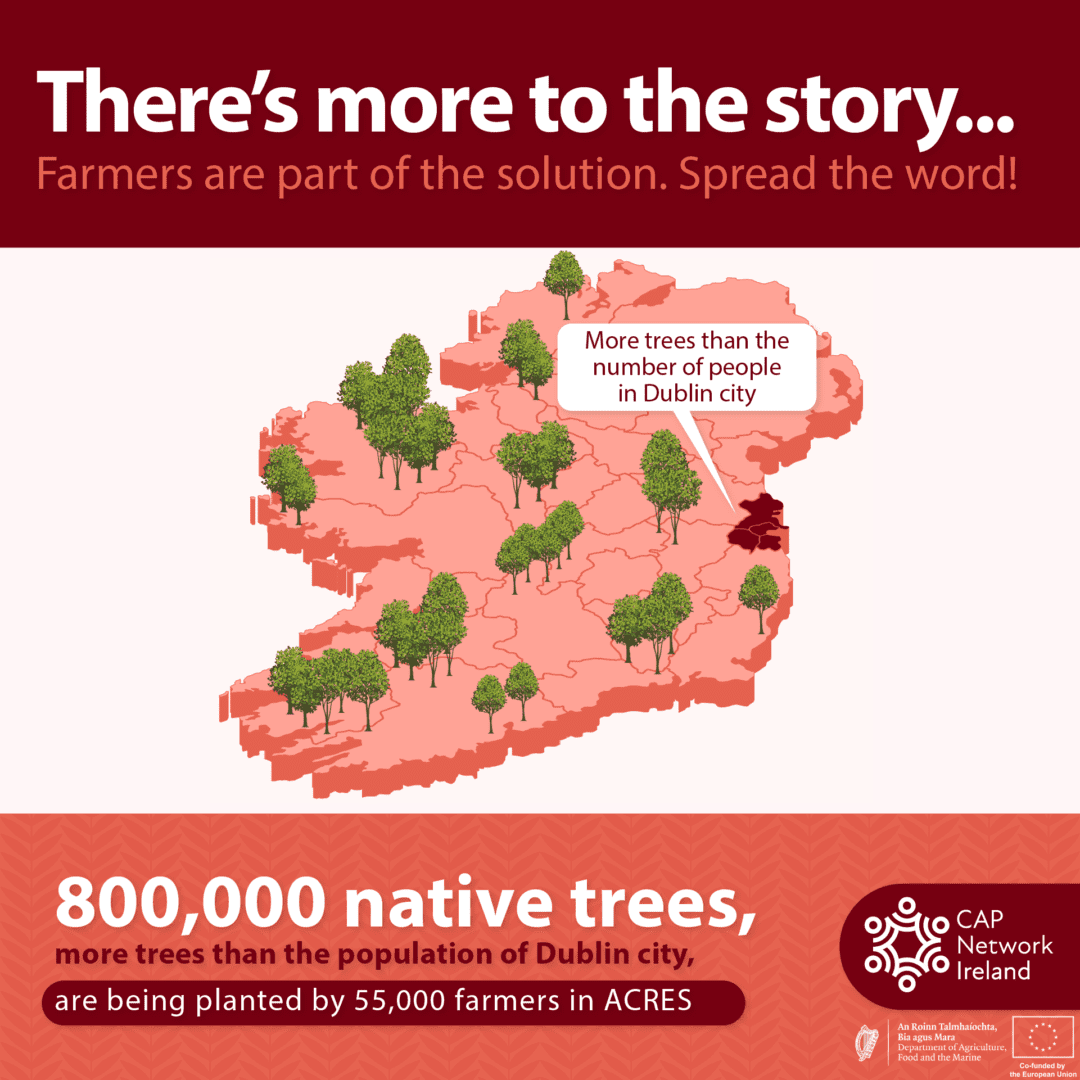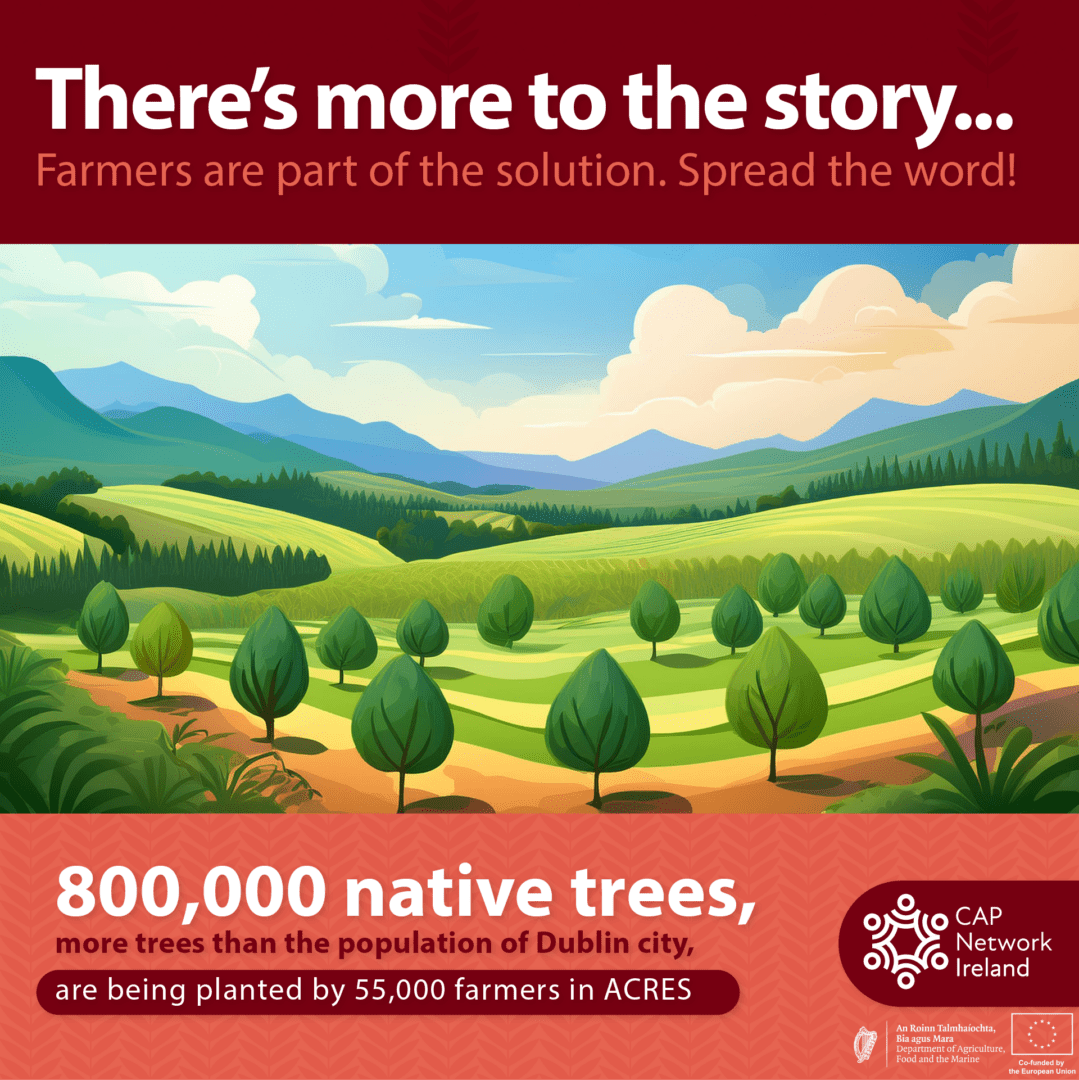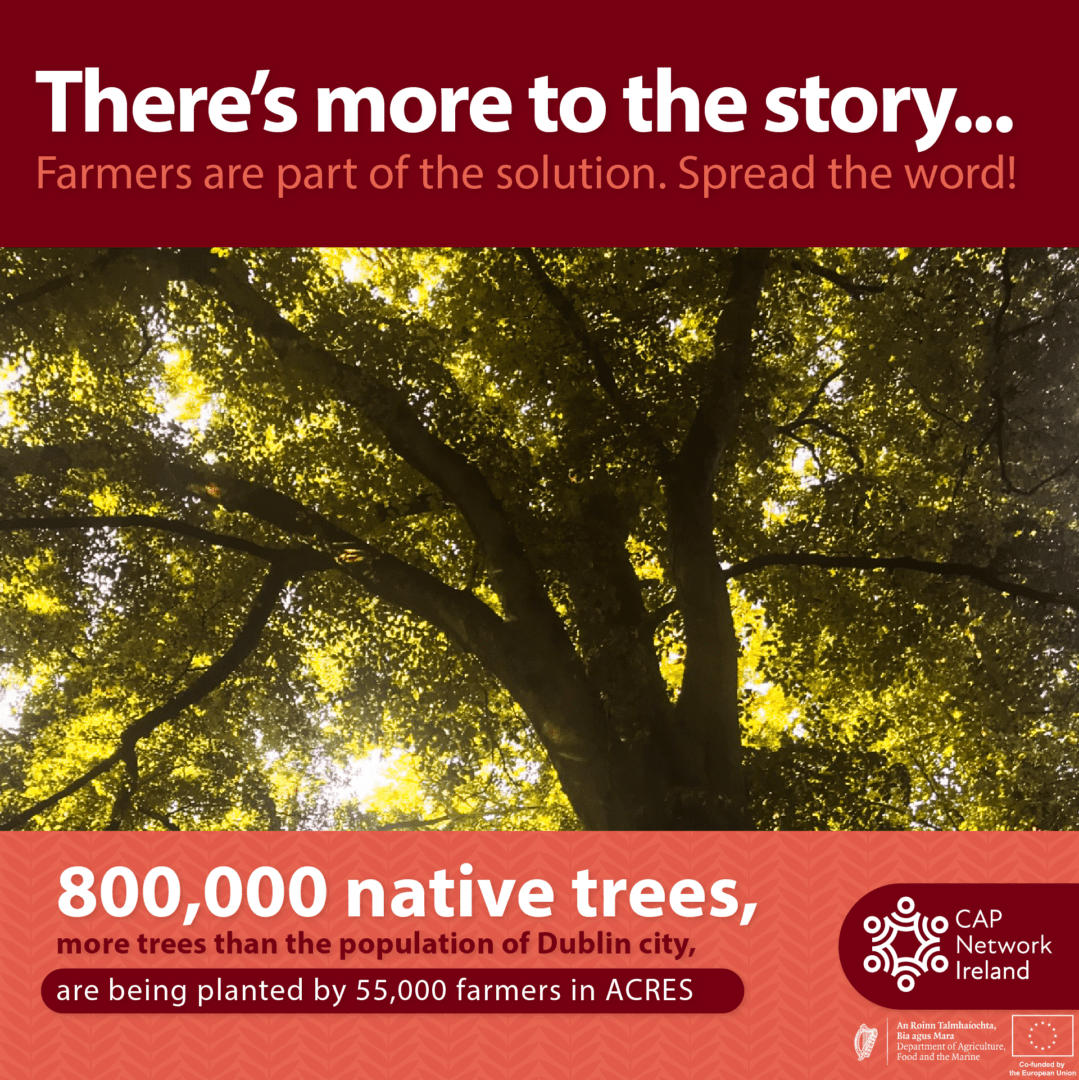There’s more to the story…
Farmers are part of the solution. Spread the word!
CAP Network Ireland has launched an 8-week social media campaign to highlight the ongoing contributions made by farmers in Ireland towards restoring the natural environment under a range of European Common Agricultural Policy (CAP) schemes, in addition to their primary role as the country’s food producers.
The campaign features regular posts to social media platforms over the 8 weeks, which provide interesting statistics illustrating how the ongoing efforts of the farming community are paying off in terms of benefits to the environment, on behalf of all of Ireland’s people.
Week 1: Making Space for Nature
The Eco-scheme rewards farmers for undertaking practices that are beneficial to biodiversity, the climate, the environment, and water quality. It is an annual voluntary scheme open to all farmers. To receive an annual payment, farmers must agree to undertake specific agricultural practices on all eligible land areas committed to the scheme.
Learn more about the
If you would like to read about a farmer participating in the Eco-Scheme, check out
Week 2: Enhancing Biodiversity
The Agri-Climate Rural Environment Scheme (ACRES) is an agri-environment climate initiative under Ireland’s CAP Strategic Plan (CSP) 2023-2027. This flagship agri-environmental program aims to combat biodiversity decline while providing income support to 55,000 farm families across Ireland.
Learn more about the
If you would like to read about how ACRES has been implemented by a participating farmer, check out
Week 3: Organic Farming
The Organic Farming Scheme offers financial support to Irish farmers who want to convert to the production of organic food. This scheme is currently open to new applicants. Under the CAP Strategic Plan (CSP) 2023-2027, the scheme has a target of supporting 5,600 organic farmers across Ireland.
Learn more about the
If you would like to read about how the Organic Farming scheme has been implemented by participating farmers, read
Week 4: Hedgerow Planting
Native species hedgerows are the most common habitat feature found in the Irish landscape and are essential for providing food and shelter for much of Ireland’s native flora and fauna. They are usually found alongside roadways and at the edges of fields and function as both fences and shelterbelts on farms. They are critical in connecting high-value habitats that would otherwise remain isolated in a landscape dominated by agriculture. Hedgerows also play a role in sequestering carbon from the atmosphere.
Learn more about the
If you would like to read about how the Organic Farming scheme has been implemented by participating farmers, read
Week 5: Allocating Land for Nature
Over 122,000 Irish farmers are participating in the Eco-scheme. Most farmers have committed to allocating a portion of their land to ‘space for nature’. 4 percent of farmers have agreed to commit 7 percent of their land to ‘space for nature’, and 79 of farmers have committed 10 percent of their land to ‘space for nature’.
Learn more about the
If you would like to read about how ‘space for nature’ has been managed by a participating farmer, check out
Week 6: Protecting Watercourses
A watercourse is a channel of water (e.g. stream, river, or canal) that provides a drainage function within the landscape and is a habitat for many forms of aquatic-based flora and fauna. Pollutants from human activity entering these channels can negatively impact the biodiversity found within the watercourse, and on the quality of the waterbody as a source of drinking water and/or leisure activity for humans.
Learn more about the
If you would like to read about how watercourses are been improved by farmers, check out the
Week 7: Reducing Greenhouse Gas Emissions
The 2024 Annual Review of the Agriculture and Land Use, Land Use Change and Forestry (LULUCF) Sector by the Climate Change Advisory Council reported that significant progress has been made by the Irish agricultural sector in meeting its commitments to climate change mitigation targets by reducing greenhouse gas emissions by 4.6% between 2022 and 2023.
Learn more about the
If you would like to read about how a participating farmer is reducing greenhouse gas emissions, check out
Week 8: Native Tree Planting
Native trees play a vital role in supporting local ecosystems and enhancing biodiversity. They conserve water, improve soil health, sequester carbon, and mitigate climate change. Ireland’s total tree cover is now at its highest level in over 350 years with over 10% of the land area covered in forest (770,020ha). Of the total forest area, 391,357 ha or 50.8% is in public ownership, mainly managed by Coillte. The forest estate is comprised of 71.2% conifers and 28.7% broadleaves. Nearly three-quarters of the stocked forest area is less than 30 years of age. However, Ireland’s native forests have dwindled to a small number of highly fragmented patches, representing about 1% of Ireland’s total land area. The CAP Strategic Plan (CSP) 2023-2027 supports the enhancement of native forestry coverage in Ireland.
Learn more about the
If you would like to read about how measures such as tree planting have been implemented by a participating farmer, read
Latest News
Stay up to date with the latest information across all our campaigns.
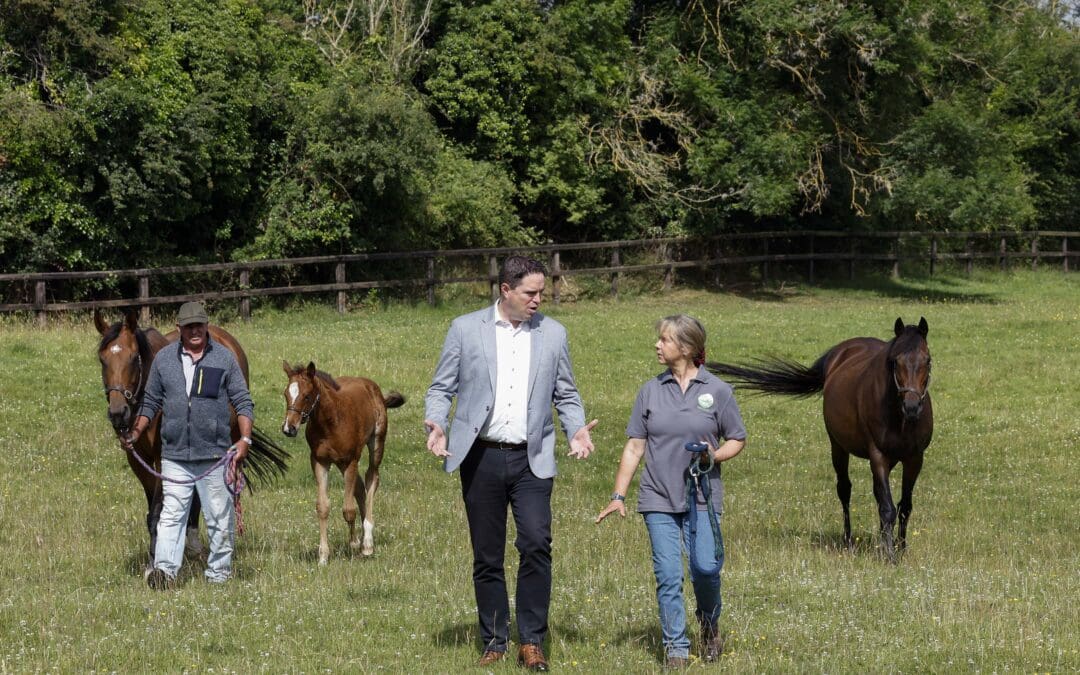
“Spotlight on Female-Led Sustainability” booklet launch
Minister for Agriculture, Food and the Marine, Martin Heydon TD, today launched the Spotlight on...

‘There’s more to the story…’ Campaign Launched
CAP Network Ireland, which is co-funded by the European Union and the Department of Agriculture,...

